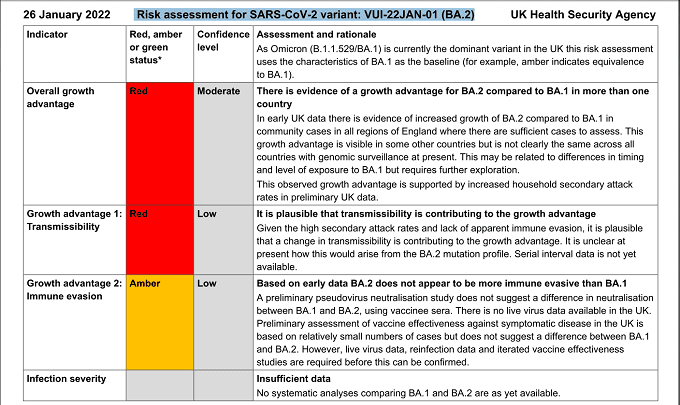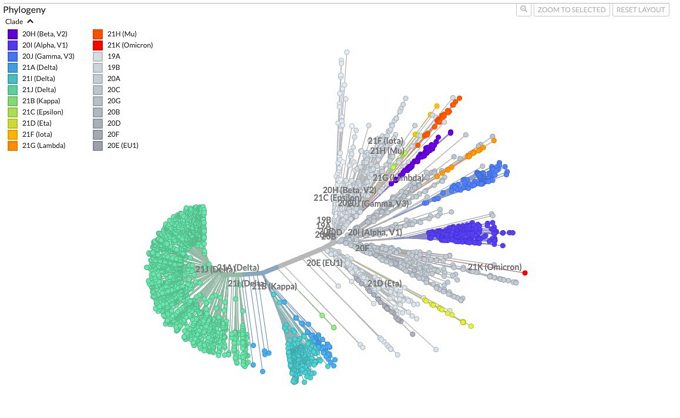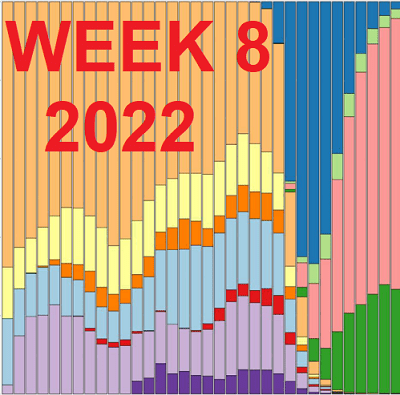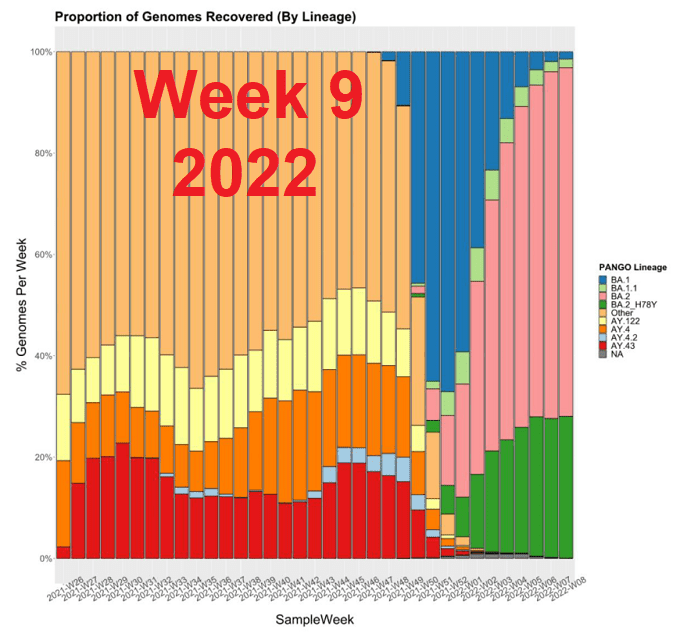
UKHSA: Risk assessment for Omicron BA.2
The latest risk assessment of the BA.2 strain from the UKHSA.
Overall growth advantage – Red: There is evidence of a growth advantage for BA.2 compared to BA.1 in more than one country.
In early UK data there is evidence of increased growth of BA.2 compared to BA.1 in community cases in all regions of England where there are sufficient cases to assess. This growth advantage is visible in some other countries but is not clearly the same across all countries with genomic surveillance at present. This may be related to differences in timing and level of exposure to BA.1 but requires further exploration. This observed growth advantage is supported by increased household secondary attack rates in preliminary UK data.
Growth advantage 1 – Transmissibility – Red: It is plausible that transmissibility is contributing to the growth advantage.
Given the high secondary attack rates and lack of apparent immune evasion, it is plausible that a change in transmissibility is contributing to the growth advantage. It is unclear at present how this would arise from the BA.2 mutation profile. Serial interval data is not yet available.
Growth advantage 2 – Immune evasion – Amber: Based on early data, BA.2 does not appear to be more immune evasive than BA.1.
A preliminary pseudovirus neutralisation study does not suggest a difference in neutralisation between BA.1 and BA.2, using vaccinee sera. There is no live virus data available in the UK. Preliminary assessment of vaccine effectiveness against symptomatic disease in the UK is based on relatively small numbers of cases but does not suggest a difference between BA.1 and BA.2. However, live virus data, reinfection data and iterated vaccine effectiveness studies are required before this can be confirmed.
UKHSA: Risk assessment for Omicron BA.2 (PDF download)





